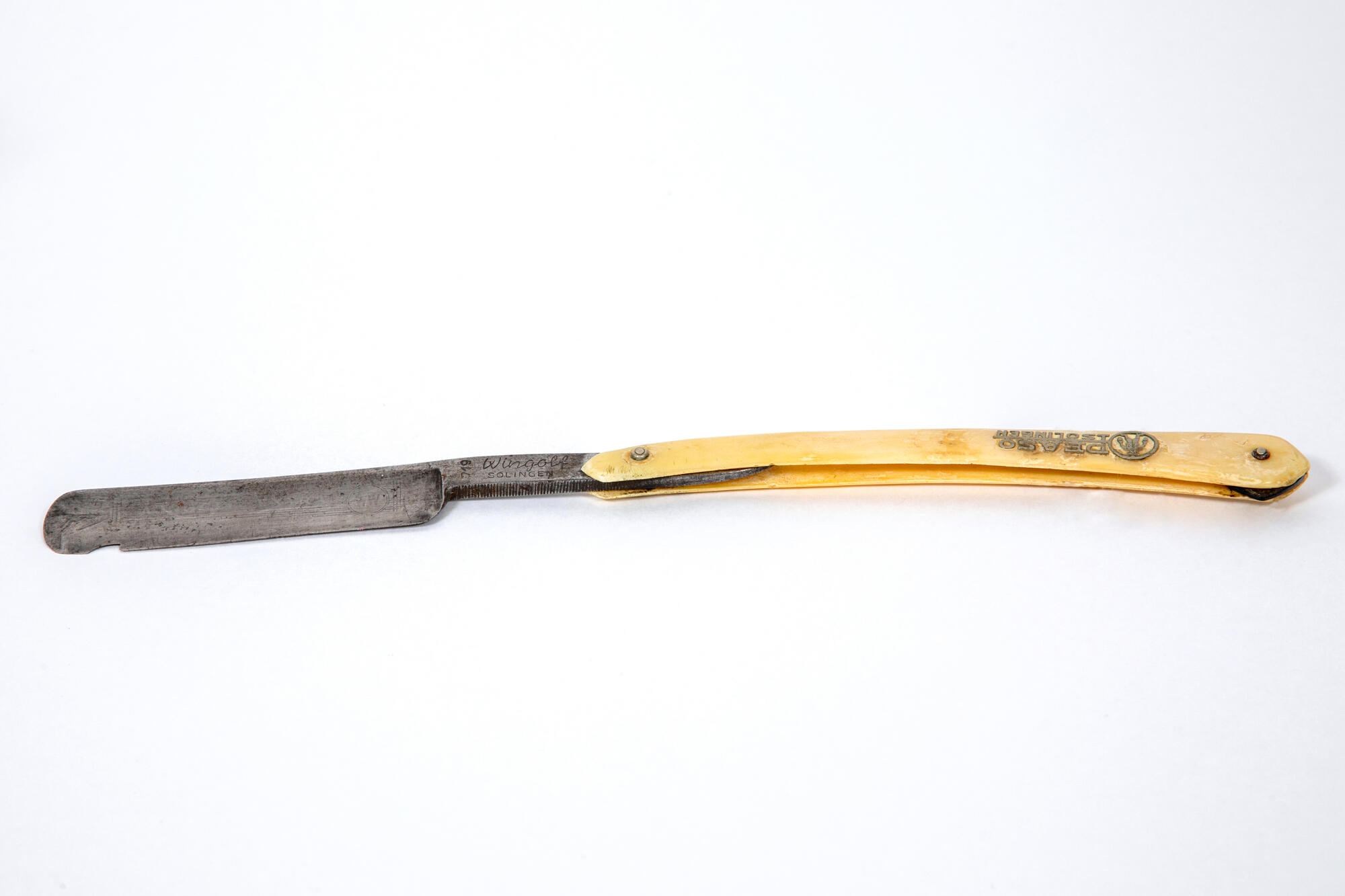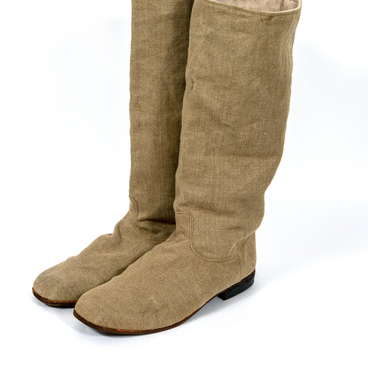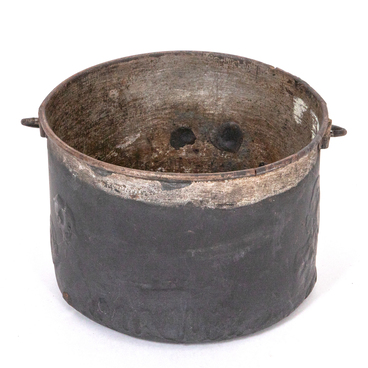The first straight, or ‘dangerous’ razors with an open blade and handle, began to be produced back in 1680 in Switzerland. They became known as ‘straight’ much later, after 1901, when King Camp Gillette began to massively produce safer T-shaped razors with cheap thin replaceable blades.
The straight razor presented in the exhibition was found at a site of World War II battles in Tver oblast, Toropets region. The manufacturer’s stamps on it are well preserved: the razor was made in Germany, some time before 1945. It could not be established specifically to which army — the Wehrmacht or the Red Army — the razor belonged.
‘Paul Adrian’ company made this razor. It also produced other popular razors (for example, Mona Lisa, Mona Lisa Luxus, Wasserträger), as well as cutlery and knives. The company was founded in 1901.
The inscription ‘Solingen’, preserved on the blade, is the name of the German city in which the company is located, and a sign of quality. Solingen has been and remained the main manufacturer of striking, edged and hunting weapons in Germany, since the Middle Ages up until now.
Soviet fighters highly appreciated the Solingen SS daggers and Wehrmacht gravity knives, and the Solingen razors were a very popular trophy among the Red Army soldiers, and even were passed to other generations. According to veterans, razors from Solingen were often exchanged for other things or services.
All Red Army soldiers were required to be smoothly shaved. Nevertheless, straight razors were classified as personal belongings and, unlike a boiler and cutlery, were not given out. Fighters bought inexpensive straight razors, used homemade or captured blades. To ensure their performance longevity, they had to be sharpened from time to time and regularly fixed — the edges of the metal had to be aligned. Abrasive stones were usually used for sharpening. And to align the edges, a wide and smooth leather belt (razor strop) was stretched, a blade was put on it flatways and, without applying strong pressure, the blade was polished several times. Sometimes various abrasive compounds were applied to the strop.
The straight razor presented in the exhibition was found at a site of World War II battles in Tver oblast, Toropets region. The manufacturer’s stamps on it are well preserved: the razor was made in Germany, some time before 1945. It could not be established specifically to which army — the Wehrmacht or the Red Army — the razor belonged.
‘Paul Adrian’ company made this razor. It also produced other popular razors (for example, Mona Lisa, Mona Lisa Luxus, Wasserträger), as well as cutlery and knives. The company was founded in 1901.
The inscription ‘Solingen’, preserved on the blade, is the name of the German city in which the company is located, and a sign of quality. Solingen has been and remained the main manufacturer of striking, edged and hunting weapons in Germany, since the Middle Ages up until now.
Soviet fighters highly appreciated the Solingen SS daggers and Wehrmacht gravity knives, and the Solingen razors were a very popular trophy among the Red Army soldiers, and even were passed to other generations. According to veterans, razors from Solingen were often exchanged for other things or services.
All Red Army soldiers were required to be smoothly shaved. Nevertheless, straight razors were classified as personal belongings and, unlike a boiler and cutlery, were not given out. Fighters bought inexpensive straight razors, used homemade or captured blades. To ensure their performance longevity, they had to be sharpened from time to time and regularly fixed — the edges of the metal had to be aligned. Abrasive stones were usually used for sharpening. And to align the edges, a wide and smooth leather belt (razor strop) was stretched, a blade was put on it flatways and, without applying strong pressure, the blade was polished several times. Sometimes various abrasive compounds were applied to the strop.



